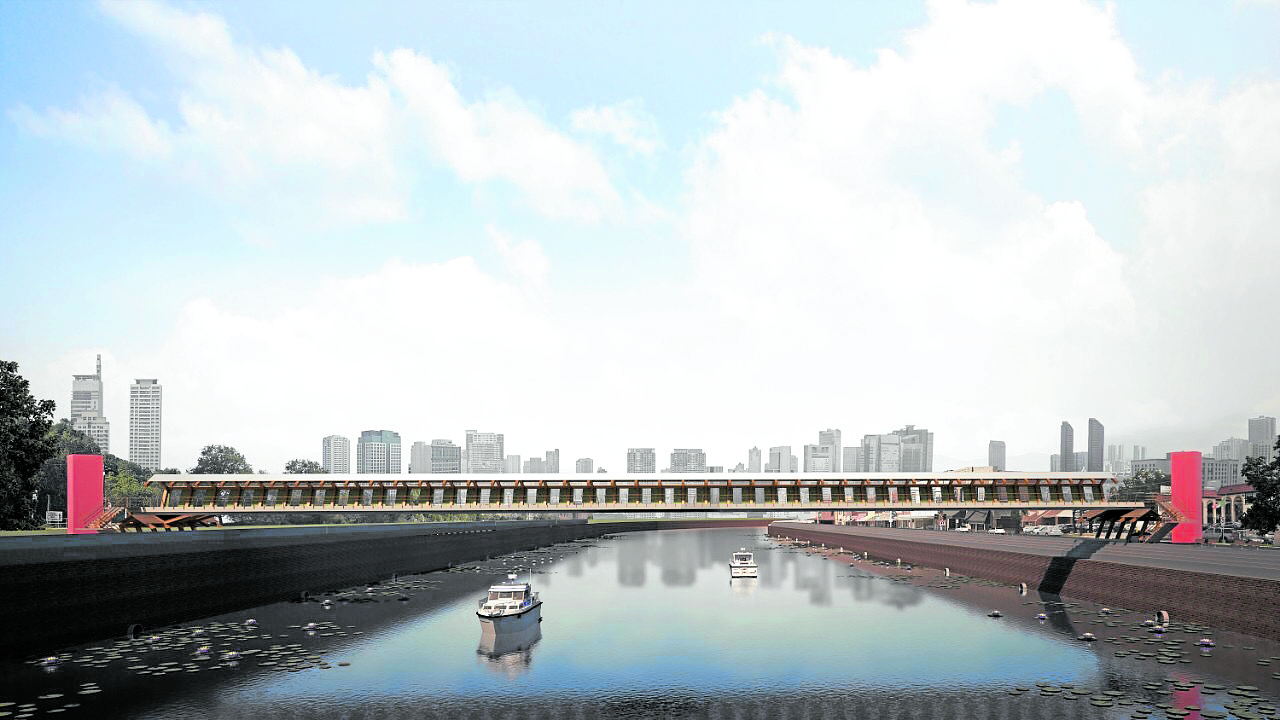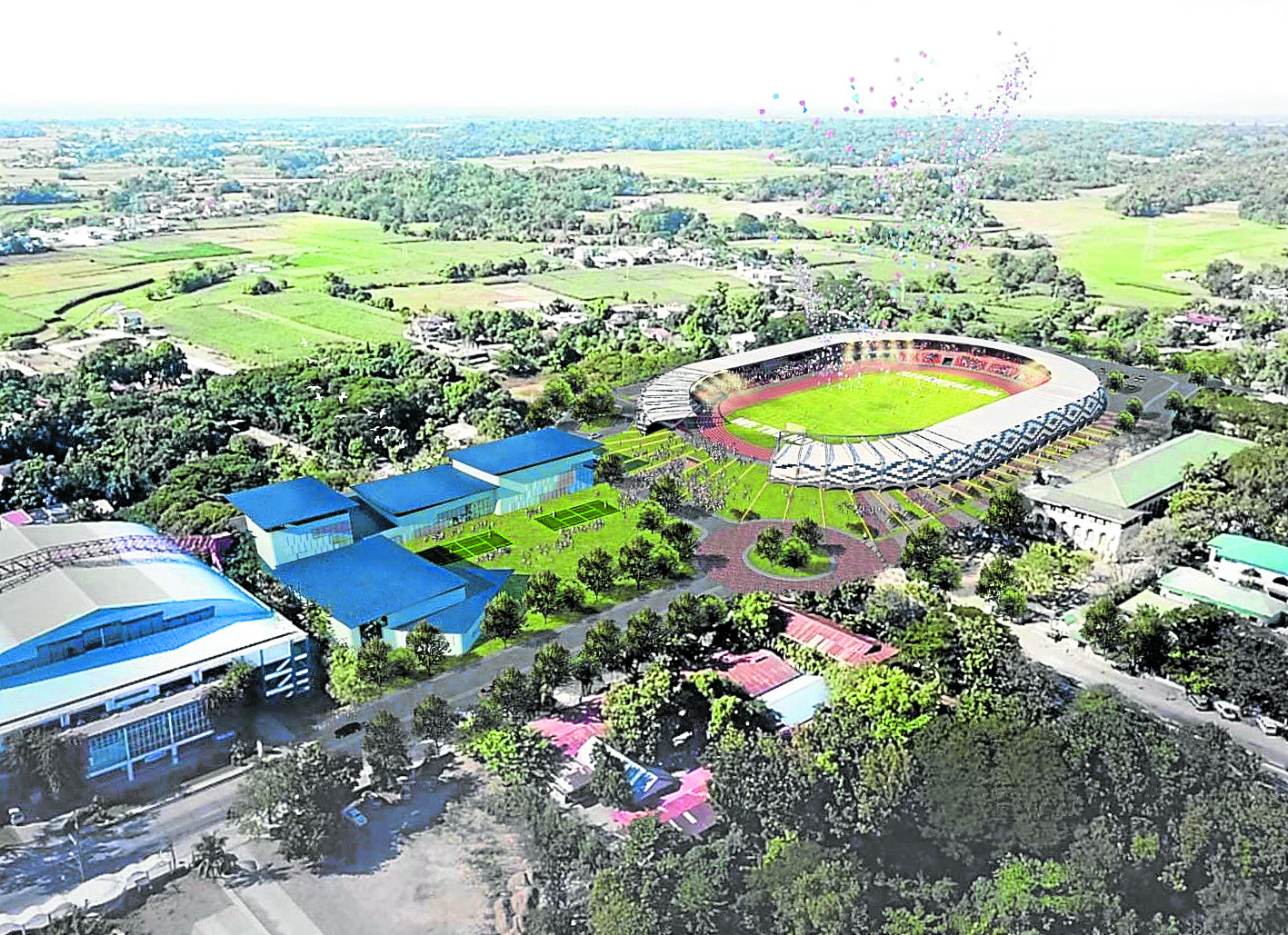The city of tomorrow
(Conclusion)
One of the great imbalances of our societal response to COVID-19 has been the overwhelming emphasis on individual safety and personal health without a corresponding measure to ensure the health of our communities.
This pandemic flourishes through community transmission. The very definition of a pandemic means that everyone is affected and thus, our communities must make sure that we come together and take care of those who are most vulnerable. Barricading ourselves behind hermetically-sealed enclaves without addressing the greater need of our vulnerable communities is self-defeating and only ensures a longer isolation program.

The Riverlane will be the first pedestrian bridge to span the Pasig River. This vital piece of pedestrian infrastructure serves to connect the Arroceros Forest Park with the Quiapo district.
Augmenting capacity
On March 24, Dr. Glenn Angeles and I started to discuss how best we can help our community. We identified the lack of hospital spaces and decided to help augment our healthcare capacity by building emergency quarantine facilities (EQFs) for our hospitals. The next day, we started working on the plans and got in touch with Maj. Carmelo Jaluague and Maj. Banjo Badayos of the AFP to further discuss our ideas and enlist the help of our armed forces for logistics and manpower. The next couple of days saw our plans grow from prototyping to building a wide network of EQFs to better address the need for space.
Our team eventually grew to include Gen. William Ilagan, Jason Ang, Rebecca Plaza, Prim Paypon, Arvin Pangilinan, Denise de Castro and so many more architects, builders and soldiers, along with funding and material donations from various donors and vendors.
Construction on the first EQF at the Manila Naval Station in Fort Bonifacio started on March 28 and was completed on April 1. Construction operations would continue to grow and reach up to 28 simultaneous sites at its peak with over 500 builders involved. By May 8, in a little over 40 days, we managed to complete over 1,000 beds in 40 different sites from Bulacan to Batangas. From the beginning, we made the plans open source and available online. This allowed them to be adopted for use for different sites—from Pangasinan, Camarines Sur, to Cebu and Davao, all the way to Singapore and Myanmar. To date, this initiative has led to about 3,171 beds built in various sites in our country alone.
Social architecture
The realities of growing megacities like Metro Manila have further accentuated the need to spread out and decentralize vital facilities more evenly across our city. Government support and assistance centered on the various barangay halls, and mobile markets were introduced to make food accessible to everyone. Everyone had to be provided for.
Social architecture focuses around the idea of social intimacy and availability, accessibility and convenience, and building a network infrastructure on a social scale that serves to connect our communities. This idea originated from our observations on the ubiquity of barangay halls and chapels in our city and started with The Book Stop Project library back in 2017. We’ve since continued this thread with the Museo del Prado Exhibit, the EQFs and our initiative to build Community Street Parks for our city.
Our current initiative to build Community Street Parks with the AFP and various LGUs seeks to mitigate cross contamination in our communities by creating public amenities that mitigate travel to and from various destinations. It seeks to enhance community bubbles by providing a viable localized leisure activity.

The FEM Stadium in Laoag is a stadium park that allows for free and open access and acts as a public space multiplier by connecting with the adjacent park and campus.
Stronger communities
Our cities cannot continue to exist with major hubs and inflection points that concentrate singular functions and require massive daily commutes.
The pandemic has shown us that for the foreseeable future, we must minimize and localize our daily commutes. A more balanced and well allocated distribution will allow us to build stronger neighborhoods by increasing casual interaction in each locality. The neighbor who grows a garden, who walks his dog, who reads his book on the bench, everyday persons who can become real neighbors.
While we bemoan the lack of public transportation and wait on the inadequate build-up of mass transit, we must explore immediately available solutions that can lessen the friction of our everyday commutes. The strength and value of personal mobility must be emphasized and promoted with bike lanes and pedestrian promenades. Pedestrian and cycling routes should be better defined along with relevant distances that can make most of our daily destinations accessible to them.
A vital component of this is the availability of affordable and localized housing. Our growth and development have long been market-driven and determined by a value equation that excludes a vast majority of our people. We currently have an opportunity to redefine this narrative and explore a community-driven development model. We must build communities that provide adequate shelter and protection for all.
Housing prices do not properly reflect the value of residential units when the actual cost of one is basically half of these prices. Institution-led development can ensure that the health of their own communities are better taken care of by providing accessible and affordable housing to them rather than leaving them to the mercy of market forces. We should not pass by our slums and pretend that we are not responsible for the welfare of the people who serve our communities. Nor can we pretend to separate their well-being with that of us all. Not this time.
How do we define communities? Do we build communities centered on consumer meccas or do we build them around local spaces that form the building blocks of our daily lives? Schools and hospitals, parks and playgrounds, culture and learning—if you find that you can walk to one of these as you need to, then you are living in a functional community, one which has unique characteristics and interesting streetscapes, where city blocks are walkable and contain a variety of interests and places.
For the vast majority of our communities, this is not the case. We have privatized and detached ourselves from the social responsibility of building a better lifestyle for our next generation. A more rational urban plan demands that we provide the public with immediate and unhindered access to the public spaces that they need. Developers, architects and government authorities have the means and opportunity to recalibrate our lifestyles. We can urge them to do so.
Our days
The days of this pandemic continue to stretch and linger on with no end in sight. While we can strive to adapt and bear with our current conditions, one must wonder what else is possible. We have been forced to reconsider our lifestyles globally. Yet in doing so, we must be cautious not to charge into a policy of isolation and segregation.
Architecture needs to function and confirm its role in our society by delving into what these days mean for our built environment. Mother Nature demands change. Our own fragile bodies demand the same. These are days that require the best of us. They are hopeful days that can serve to usher in a better understanding of what we as a community need. Change is inevitable.